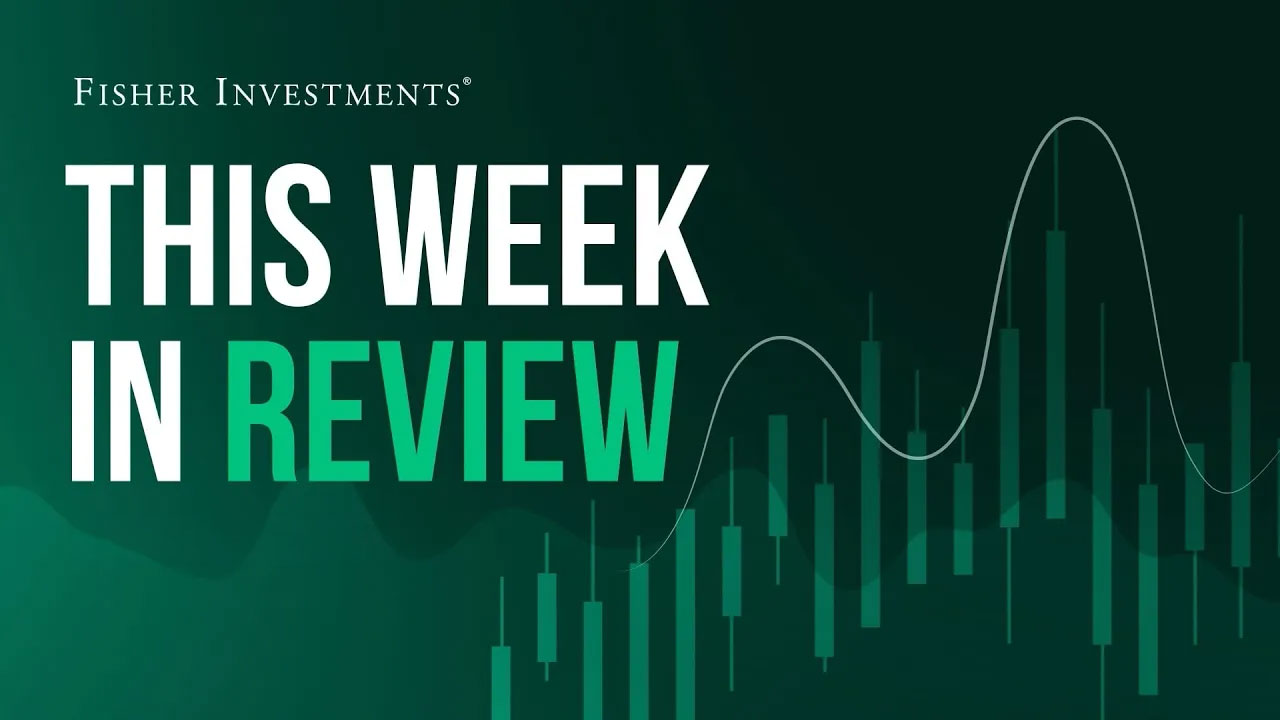Personal Wealth Management / Expert Commentary
This Week in Review | Crypto Reserve, Tariffs, US GDP Forecasts (March 7, 2025)

The economy and markets can feel dizzying and ever changing. That’s where we can help. Fisher Investments’ “This Week in Review” is a weekly segment designed to highlight a few things you may have missed this week, what they mean for financial markets and, most importantly, investors. This week’s topics include a potential US government cryptocurrency reserve fund, tariff developments and commentary on the latest Atlanta Fed’s GDPNow forecast.
Thanks for watching and don’t forget to tune in next week.
Transcript
Mathew White:
Hello and welcome to This Week in Review. A weekly segment designed to highlight a few important developments you may have missed this week, what they may mean for markets, and most importantly, the potential impact for investors. Now let's review what happened this week.
Now, let's review what happened this week.
First, a US crypto reserve fund.
First, a US crypto reserve fund. On Sunday, President Trump revealed plans for the US government to buy and hold a variety of cryptocurrencies in a national reserve fund including Bitcoin, Ethereum and a few others. Proponents believe this could help diversify government holdings and hedge against financial risks, where others see cryptocurrencies as less than ideal reserve assets due to their volatility. This morning we got more details, but much more about this initiative remains unclear. Regardless of what happens here, we don't think the investment case for cryptocurrency changes much. We're not inherently against cryptocurrencies, but they behave more like volatile commodities, but without any industrial use. When it comes to crypto, we'd encourage investors to take caution and avoid basing any long term investment decisions on political promises. As we've seen this year, crypto prices can swing dramatically for any or no reason at all. And in our view, there are certainly less risky options for investors' hard earned savings.
Next, more tariff news.
Following a month long pause, President Donald Trump resumed plans early this week to place tariffs on goods from Canada and Mexico, while also raising tariffs on Chinese goods to 20%, doubling the previous rate. In response, Canada and China announced retaliatory tariffs, while Mexico signaled it would respond over the weekend. Global stocks dropped on the news, adding to the recent bout of downward volatility, and then gyrated the rest of the week as the Trump admin signaled some industries may receive exemptions and eventually paused tariffs on most goods from Mexico and Canada for another month. While more downside is possible, we think the biggest risk for investors is making any knee jerk decisions amid fast moving tariff news. Market volatility can feel unsettling. However, selling stocks during a downturn can lead to missing out on gains if the market rebounds, which we believe will happen this year. While so far, President Trump has proposed larger tariffs this year than in 2018 to 2019. They may not be fully implemented or remain in effect as long as expected. Even if they do, businesses are also highly adaptable and find ways to adjust to shifting economic policies which can mitigate the longer term damage some fear. All in all, we still see a strong case for global economic growth ahead, despite tariffs, which should continue to support this bull market.
Finally, US inflation.
Finally, the Atlanta Fed's GDP forecast. Over the last week, a model used by the Federal Reserve Bank of Atlanta called GDPNow shifted its forecast for the first quarter of the year from one of economic growth to contraction. Unsurprisingly, this sparked fears about a potential recession and has fed into recent volatility. But here's what investors need to keep in mind. The Atlanta Fed's GDPNow model is not an official forecast of the Fed or the Atlanta Fed. It is a tool that analyzes current economic data and uses historical trends to estimate quarterly growth and continuously updates as new data becomes available. Meaning its projections can fluctuate significantly throughout the quarter. With nearly a month left in the first quarter and much of February's data yet to be released, it's far too early to draw conclusions about where GDP will land for the quarter. Interestingly, other Nowcast models from the New York and Saint Louis Fed's suggest Q1 GDP will grow. Yet these have gotten far less attention. We don't put too much emphasis on any of these at this point. After all, there are still two months of data to come. But headlines touting recession fears suggest investor sentiment has fallen recently, paving the way for reality to exceed lowered expectations and help propel this bull market further.
That's it for this week.
That's it for this week. Thanks for tuning in to This Week in Review. If you're looking for more insights, then don't miss our other series, 3 Things You Need to Know This Week, released every Monday. You can also visit FisherInvestments.com anytime for our latest thoughts on markets. Thanks again for joining us and don't forget to hit “like” and “subscribe!”

See Our Investment Guides
The world of investing can seem like a giant maze. Fisher Investments has developed several informational and educational guides tackling a variety of investing topics.




